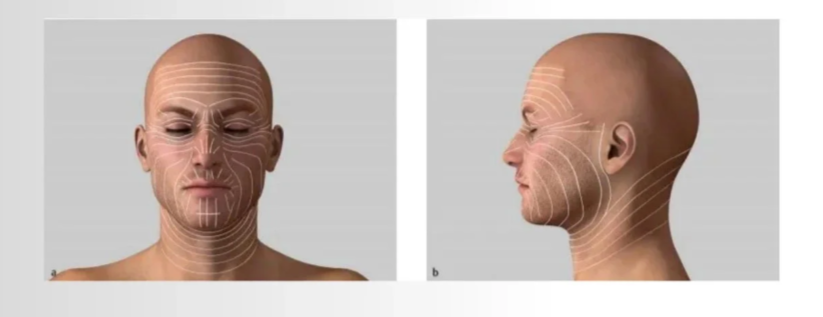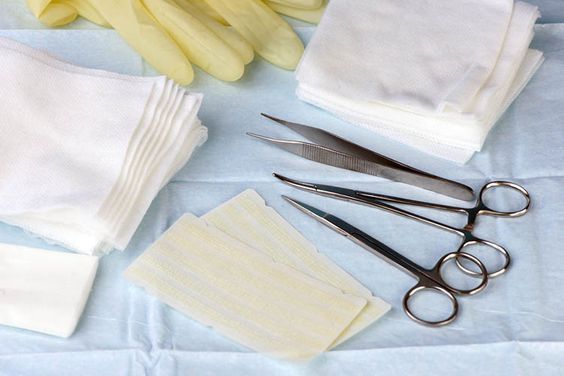Scar formation is an inevitable natural process during wound healing. However, the appearance and extent of scars are affected by many factors, among which skin tension is a crucial factor. Let's take a look at the effects of static and dynamic tension on scars.

The most famous skin tension lines are Langer's lines, named after Karl Langer, who described them in 1861. Australian anatomist Karl Langer (1819-1887) described the "skin tension lines" in 1861 by making circular puncture wounds on cadavers with an awl, which formed ovals along the tension lines and later revised his original work by excising a circular piece of skin. The tension lines serve as a guide for the selection of skin incisions, and surgical incisions along the tension lines will form very small scars.
How do we define static and dynamic tension?
Static tension: Static tension is the amount of tension the skin is under when it is at rest. The skin clings tightly to the body frame and will retract open after trauma due to the alignment and orientation of the collagen fibers beneath the skin. The degree to which the wound edges retract or "open" is an important indicator of how wide the resulting scar may be. A gap of 5 mm or more indicates significant tension and an increased risk of a wide scar.
Dynamic tension: Dynamic tension refers to the tension on the skin caused by muscle contraction or body movement when the skin is moving. These forces are most noticeable during changes in facial expressions, and lacerations perpendicular to the skin tension lines tend to heal with wider scars than lacerations parallel to them.
Effects does tension have on scars?
1. Scar width and hardness: The greater the skin tension, the looser the wound edges will be, which may stimulate excessive skin proliferation and cause the scar to become wider and harder.
2. Wound healing speed: High tension may slow down wound healing because tension interferes with the normal contact and healing process of the wound edges.
3. Risk of scar formation: Areas with frequent activities and high tension, such as shoulders and chest, are more likely to form scars because the skin is subjected to more traction and friction during activities.
What do silicone gel scar dressings do?
1. Soften scar tissue: Silicone gel can retain moisture in the scar area and prevent the skin from drying out. This moisturizing effect gradually softens the scar tissue, reduces the hardness of the scar, and makes it closer to the texture of the surrounding normal skin.
2. Inhibit proliferation: By forming a protective film on the surface of the scar, silicone gel exerts a certain pressure on the scar. This pressure can prevent excessive proliferation of scar tissue, especially for those types of scars that are prone to proliferation, such as burn scars and surgical scars.
3. Promote collagen remodeling: Silicone gel can regulate the metabolism of collagen, promote the gradual decomposition of abnormally accumulated collagen, and promote the production of new and normal collagen. This helps to improve the structure of scar tissue and make it more regular.
4. Reduce inflammatory response: For scars in the inflammatory stage, silicone gel has a certain anti-inflammatory effect. It can relieve symptoms such as redness, swelling, and itching in the scar area and reduce the adverse effects of inflammation on the development of scars.

Skin tension is one of the important factors that affect wound scar formation. By understanding the nature of skin tension and its impact on scars, we can better formulate wound management strategies. At the same time, as an effective scar management tool, silicone gel scar dressing plays an important role in scar softening, inhibiting hyperplasia, promoting collagen remodeling, and reducing inflammatory response due to its unique mechanism of action. As a silicone gel scar dressing manufacturer, we are committed to providing high-quality scar management solutions to help patients reduce the troubles caused by scars and regain confidence and beauty. For more information on Innomed®Silicone Scar Dressing, Refer to the Previous Articles. If you have customized needs, you are welcome to contact us; You Wholeheartedly. At longterm medical, we transform this data by Innovating and Developing Products that Make Life easier for those who need loving care.
Editor: kiki Jia

 English
English عربى
عربى Español
Español русский
русский 中文简体
中文简体








